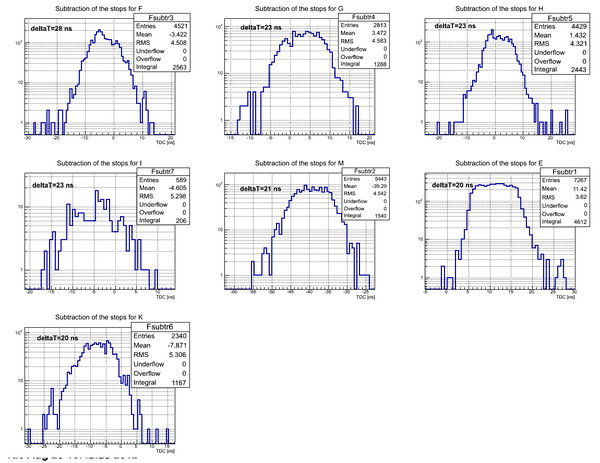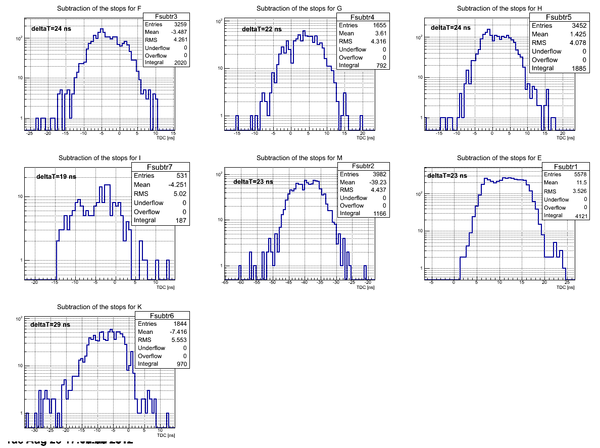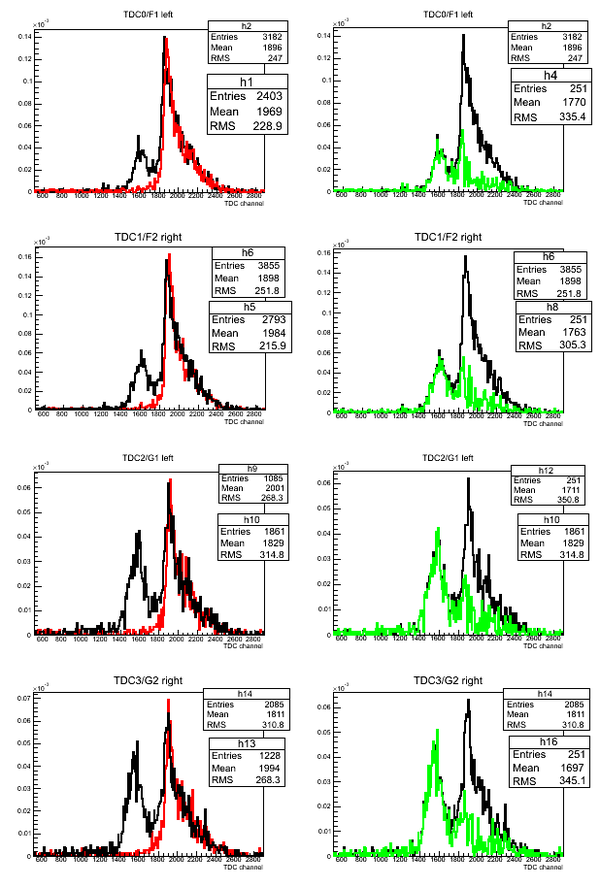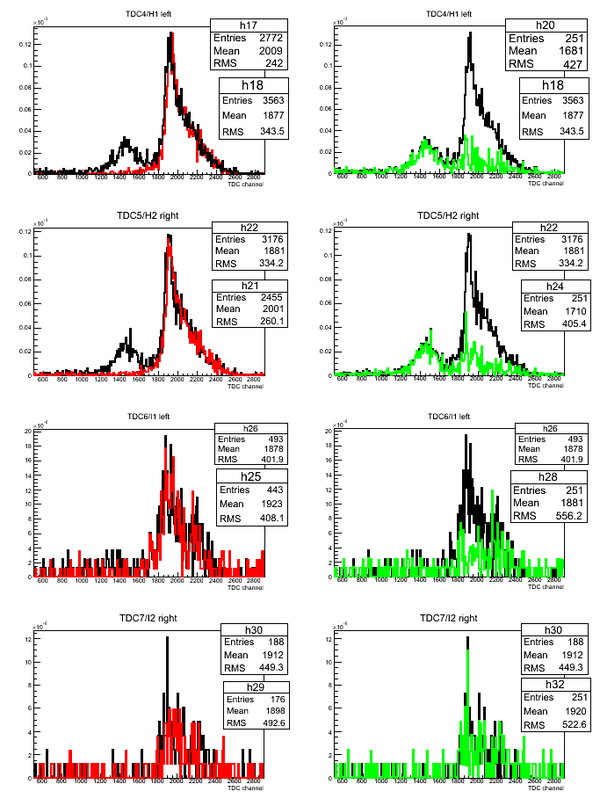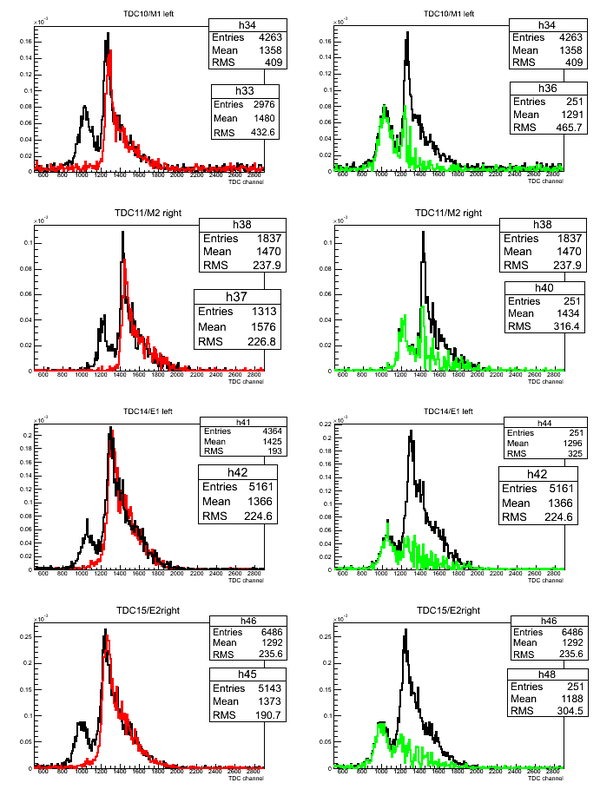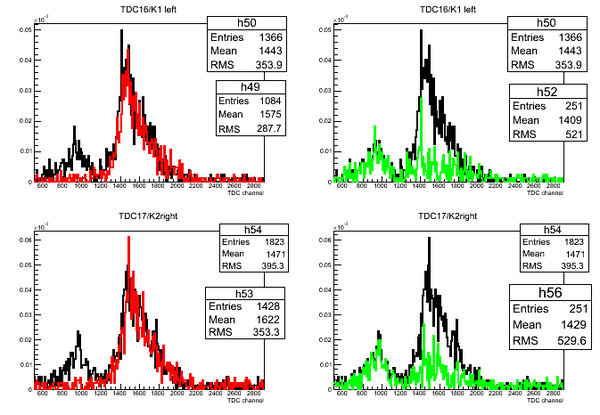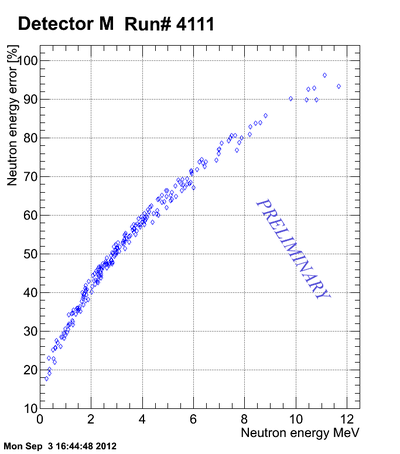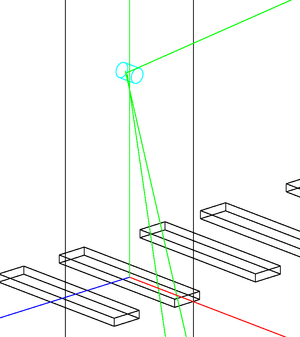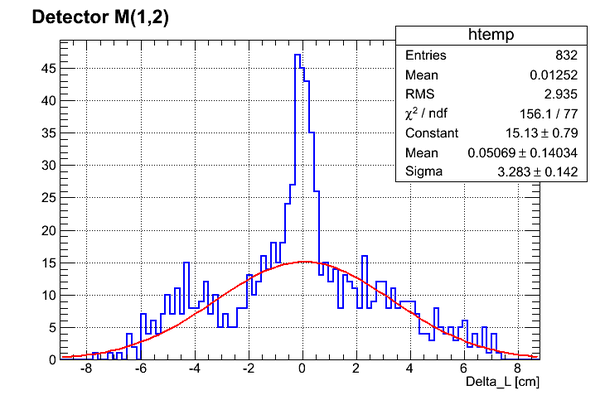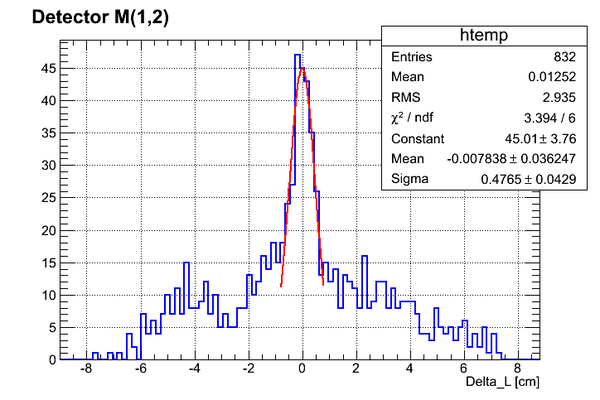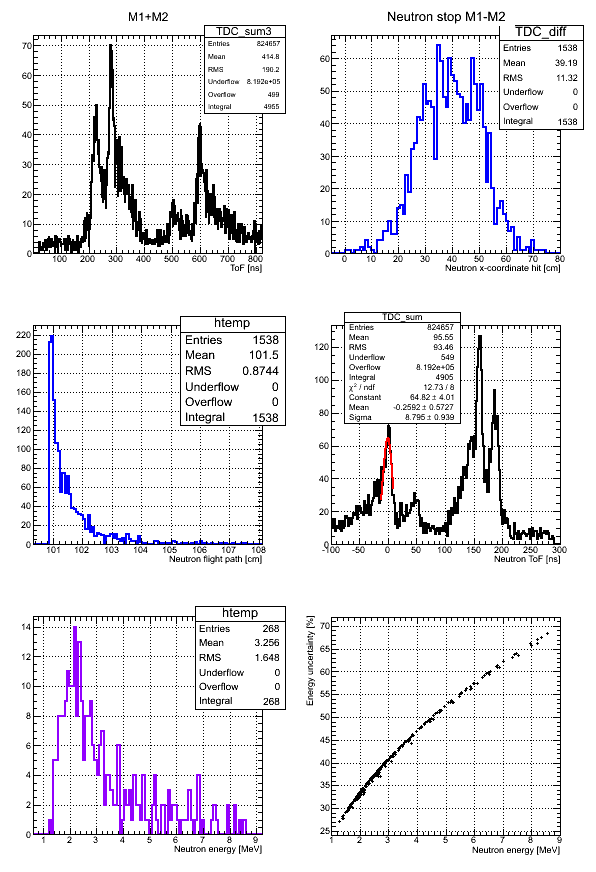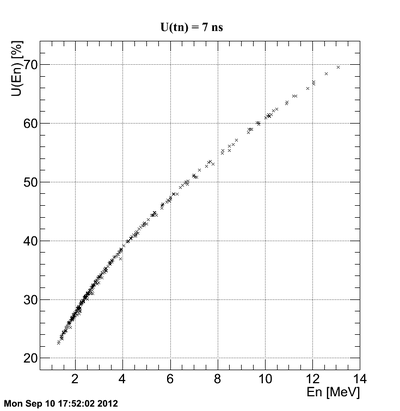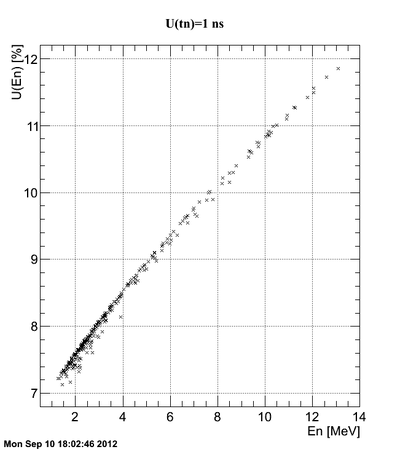Difference between revisions of "Runs 4111(D2O)/4112(H2O)"
| Line 34: | Line 34: | ||
As the energy increased the uncertainty increases to the point the the error bar is as big as the magnitude of the energy. | As the energy increased the uncertainty increases to the point the the error bar is as big as the magnitude of the energy. | ||
| − | ==Simulation of n-flight pass== | + | == Simulation of n-flight pass == |
Simulation of the flight pass length uncertainty <math>U(l_n)</math> for Det M(1,2): | Simulation of the flight pass length uncertainty <math>U(l_n)</math> for Det M(1,2): | ||
Revision as of 00:57, 11 September 2012
Subtraction of the stops for each detector in the case of D2O target. The length of the active area (scintillator) of the detector is 75.3 cm.
Subtraction of the stops for each detector in the case of H2O target:
Normalized superimposed timing spectra from D2O(black line)/H2O(red line) targets and bin-by-bin subtraction (green line) of D2O-H2O data:
Neutron energy distribution data analysis for run 4111:
Errors on the neutron energy for the case of Det M:
Where uncertainty in the neutron flight pass due to the finite width of the detector (14.8 cm) and uncertainty in zero time definition in neutron TOF spectrum
Correlation between the neutron energy and neutron energy uncertainty is plotted below:
The above plot may look better if you plot -vs- () As the energy increased the uncertainty increases to the point the the error bar is as big as the magnitude of the energy.
Simulation of n-flight pass
Simulation of the flight pass length uncertainty for Det M(1,2):
Cylindrical target with dimensions of real target was used. It was filled with liquid D2. 1 MeV neutrons were generated inside the target unoformly and isotropically. The shortest distance from the target to the detector surface was 97.4 cm (corresponds to zero in the plot of the Delta_L)
The whole range fit:
Central region fit:
As can be seen we have of ~ 3.3 cm for the whole detector (no binning).
Experimental data
The correlation of neutron energy and its uncertainty , and neutron ToF cut [20,65] ns:
If we consider the neutron time of flight uncertainty and then the correlation plot changes to
If we consider the neutron time of flight uncertainty and then the correlation plot changes to
It can be concluded that the neutron energy uncertainty is really sensitive to the neutron ToF uncertainty. In our case we had a long tail in photon peak which could possibly distort the zero time definition and the precision of neutron energy calculation.
